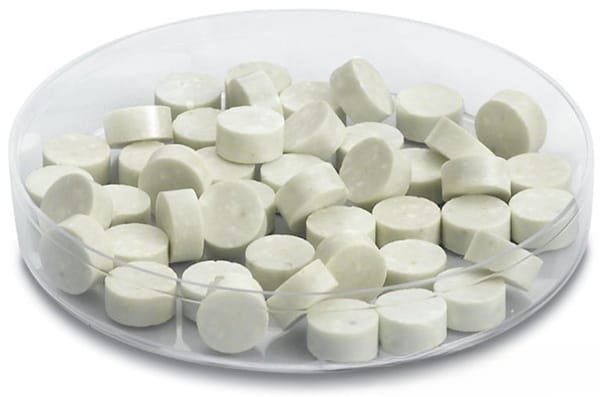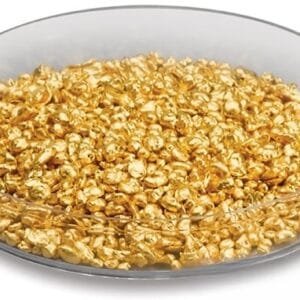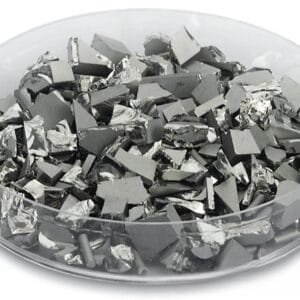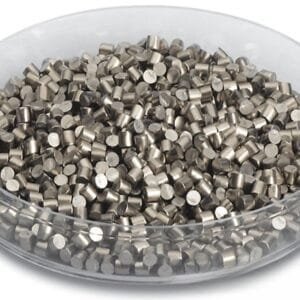Sodium Fluoride Evaporation Materials
Introduction
Sodium Fluoride (NaF) Evaporation Materials are high-purity fluoride compounds widely used in thin film deposition for optics, electronics, and energy devices. Known for their excellent optical transmission across the ultraviolet (UV), visible, and infrared (IR) spectrum, NaF-based coatings are valuable in optical filters, lenses, and anti-reflective films. Their stability and uniform evaporation behavior make them suitable for both electron beam (e-beam) and thermal evaporation processes.
Detailed Description
Sodium Fluoride evaporation materials are produced from refined high-purity NaF, consolidated into pellets, tablets, or granules to ensure smooth evaporation. With high chemical stability and a low refractive index, NaF thin films provide strong optical performance and durability.
Chemical Formula: NaF
Purity: 99.9% – 99.99% (3N–4N) to ensure minimal impurities.
Appearance: White crystalline solid.
Forms: Pellets, tablets, or pieces designed for use in boats, crucibles, or e-beam sources.
Properties: High transparency, good adhesion, and consistent evaporation rates under vacuum.
Applications
Sodium Fluoride evaporation materials are used in a wide range of industries:
Optical Coatings – Anti-reflective films for lenses, prisms, and windows.
Infrared Optics – Coatings for IR transmission devices and sensors.
Laser Technology – Thin films for laser optics and protective coatings.
Display Technology – Films for enhancing light transmission and minimizing reflection.
R&D – Material science studies and experimental coatings with alkali halides.
Technical Parameters
| Parameter | Typical Value / Range | Importance |
|---|---|---|
| Purity | 99.9% – 99.99% | Ensures defect-free, stable optical coatings |
| Particle/Form Size | Pellets/Tablets (2–6 mm) | Enables uniform evaporation |
| Evaporation Method | E-beam / Thermal | Suitable for multiple deposition systems |
| Appearance | White crystalline solid | Characteristic of NaF |
Comparison with Related Materials
| Material | Key Advantage | Typical Application |
|---|---|---|
| Sodium Fluoride (NaF) | Low refractive index, broad transparency | AR coatings, optics |
| Lithium Fluoride (LiF) | Excellent UV transmission | Deep-UV optics, windows |
| Calcium Fluoride (CaF₂) | High laser damage threshold | Laser and IR optics |
FAQ
| Question | Answer |
|---|---|
| What forms are available? | Pellets, tablets, and granules suitable for thermal or e-beam evaporation. |
| What is the lead time? | Standard delivery is 1–2 weeks depending on order size. |
| Is NaF hygroscopic? | Slightly; it should be stored in a dry, sealed container. |
| How is it packaged? | Vacuum-sealed with desiccants, cushioned with foam, and shipped in export-safe cartons. |
| Which industries use NaF evaporation materials? | Optics, lasers, displays, and advanced R&D. |
Packaging
Sodium Fluoride evaporation materials are vacuum-sealed with moisture-proof barriers and desiccants to prevent contamination. Each unit is externally labeled for traceability and packed in export-grade cartons or wooden crates with protective foam inserts.
Conclusion
Sodium Fluoride (NaF) Evaporation Materials provide excellent optical transparency, stable evaporation performance, and reliable coating quality, making them a preferred choice in optical, laser, and display technologies. With customizable purity levels and forms, they are suitable for both industrial-scale deposition and advanced research applications.
For detailed specifications and a quotation, please contact us at [sales@thinfilmmaterials.com].


 MSDS File
MSDS File



Reviews
There are no reviews yet.